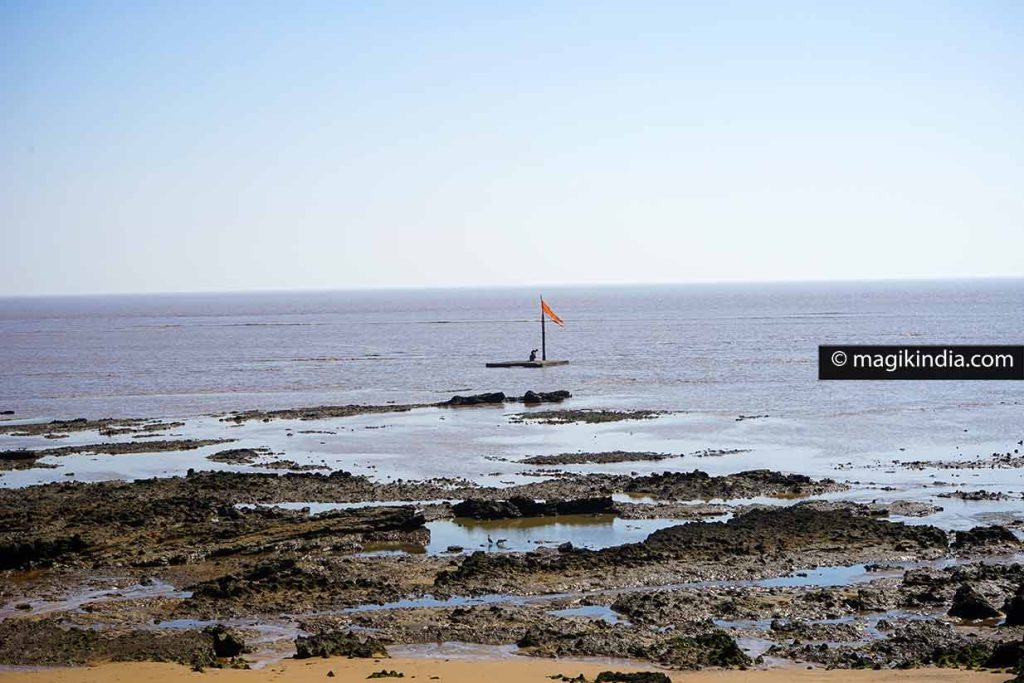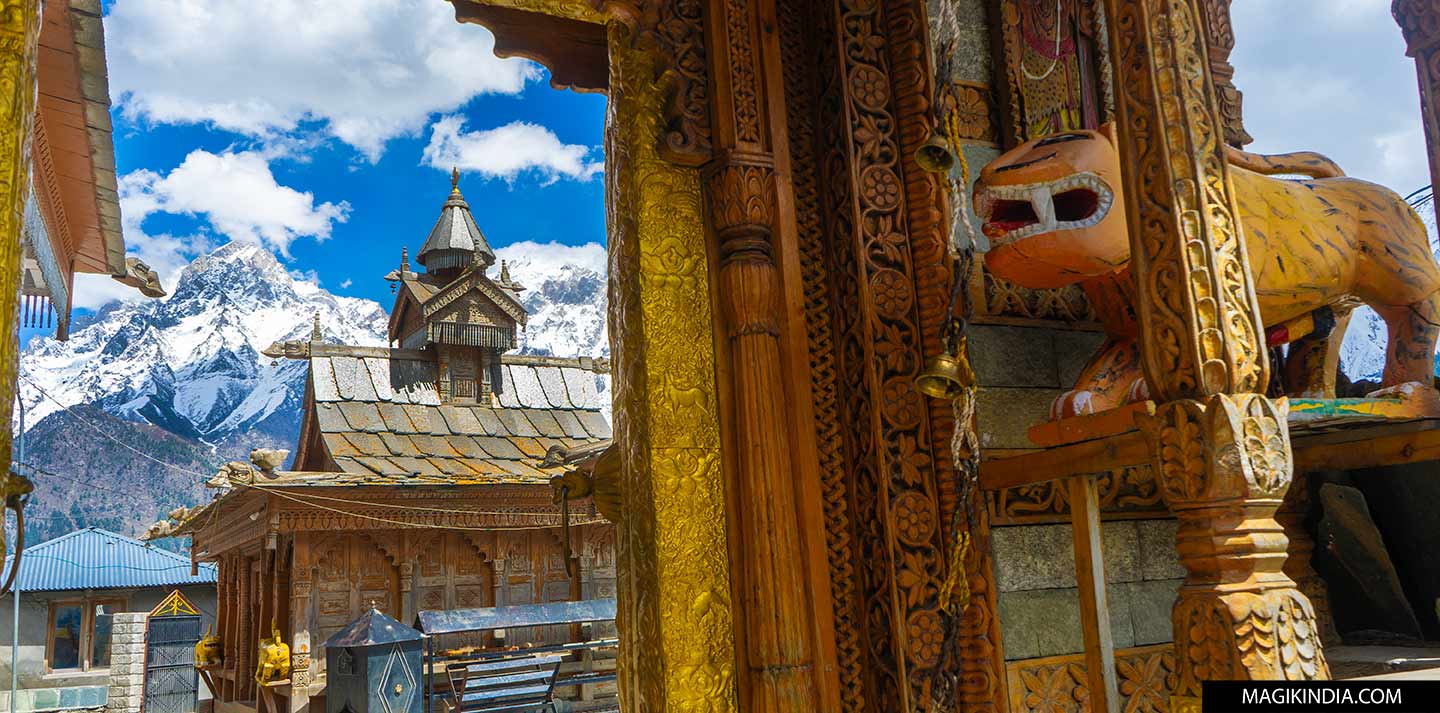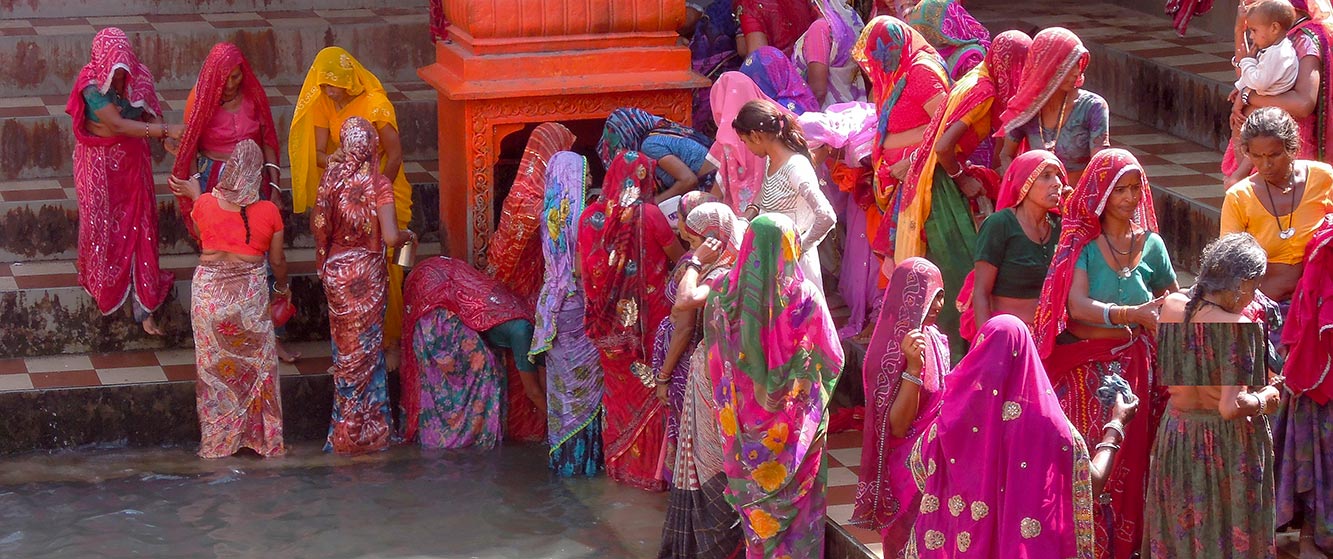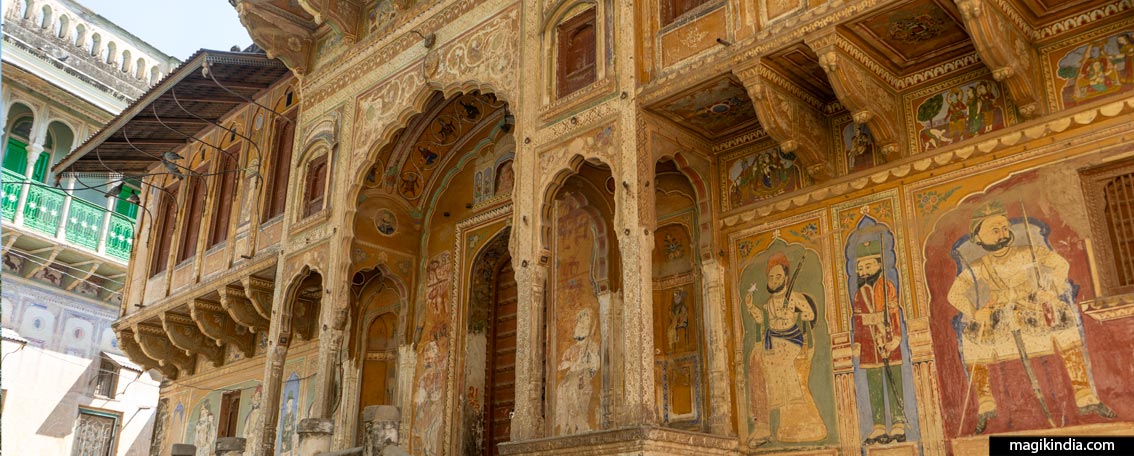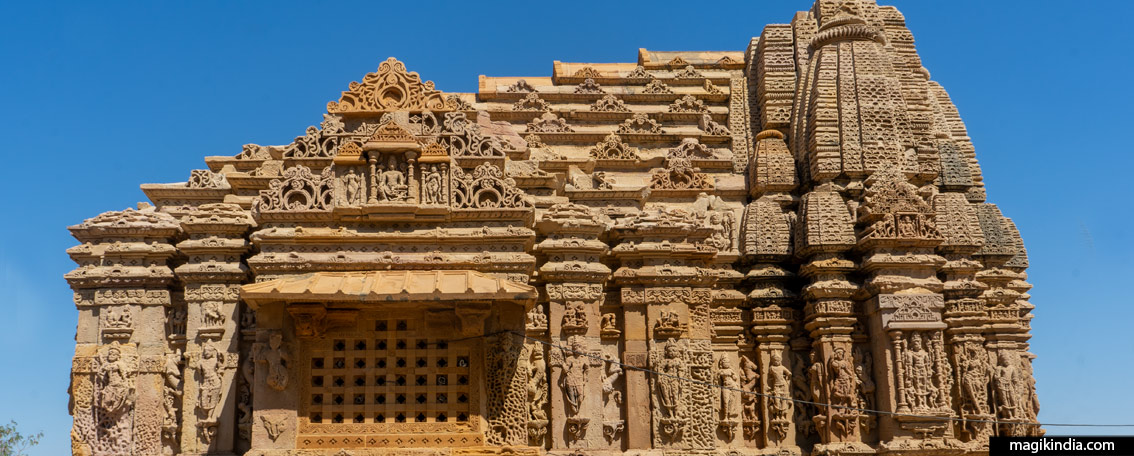
A day at Pingleshwar Mahadev temple
I was visiting Gujarat for the second time. This time I had decided see the coastal region of the Saurashtra peninsula: Diu, Somnath and Dwarka. I don’t know how I ended up in Pingleshwar, I always have the habit of traveling without a guide to leave spontaneity. What I do remember, however, is that it was a precious day with the inhabitants of the region.
I was on the road again after climbing the hill of Palitana, one of the great Jain pilgrimages in India. As my car was driving along the coast of the Arabian Sea, I made a stop at Mahuva, which is known for its mild climate and lush green landscapes in a rather arid region. It is sometimes nicknamed the “Kashmir of Saurashtra” for this reason… A bit exaggerated though.
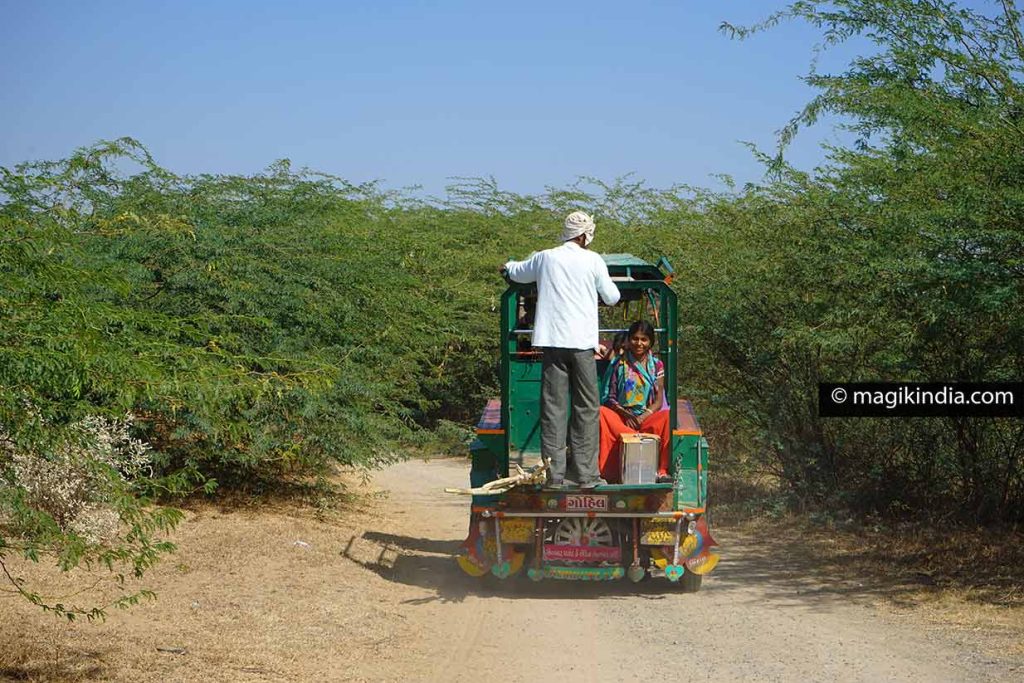
After visiting several temples in this small city (see my article on Mahuva), I continued my journey through a dusty path lined with thorny bushes. After two or three kilometres, the horizon ends up opening onto a vast golden beach bordered by with ebony-colored volcanic rocks. A striking contrast.
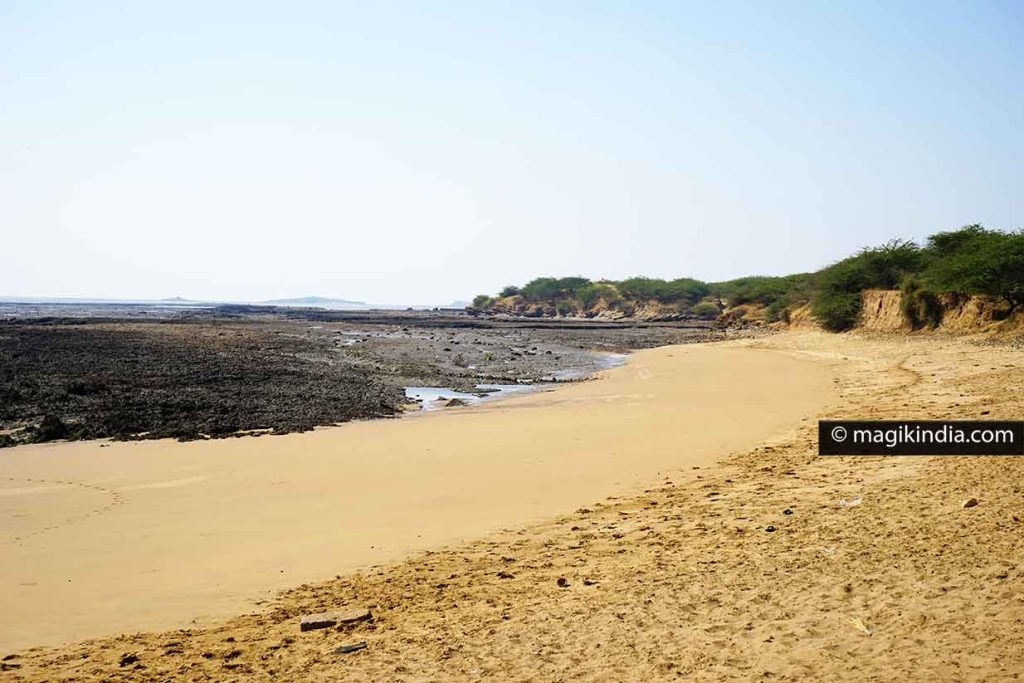
We park the car near a small temple decorated with colorful ceramics.It is sheltered by an imposing banyan tree. Under this fig tree, a saddhu hermit has put down his suitcases, a bric-a -brac of kitchen utensils and ingredients for pujas (rituals). His long, tangled hair seems to merge with the aerial roots of the tree. His name is Gokul Giri, he kindly maintains this small shrine dedicated to Shiva.
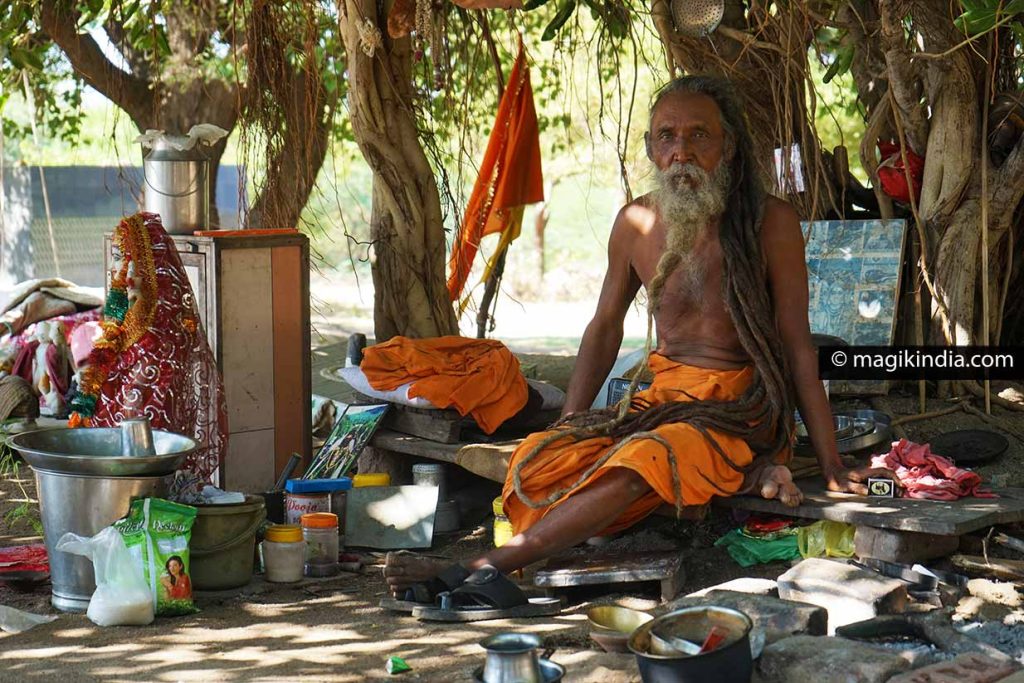
The interior of the temple, whose unlikely guardian is a white cat with piercing green eyes, features two Shiva-lingams standing side by side, with one of the yonis (base) encased in the other.
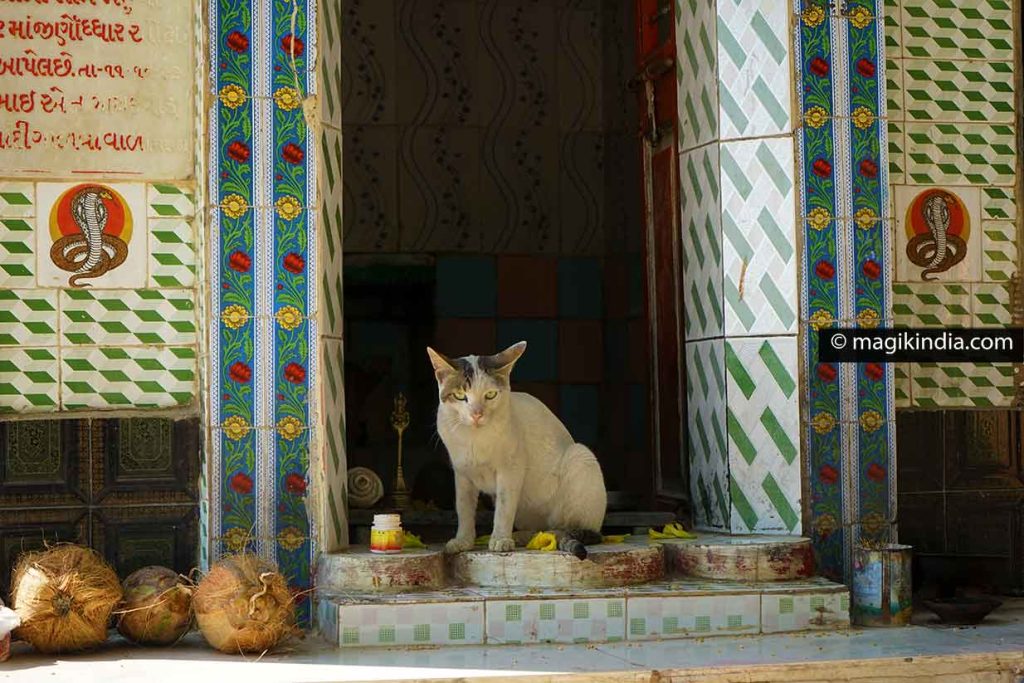

But this is not the main temple. The temple devotees come to see is the sanctuary of “Pingleshwar Mahadev”, placed on a platform in the middle of the sea; visits are made according to the tides. As I am about to go there, a Gujarati family of about twenty members comes towards me, surely piqued by curiosity: it is not every day that a foreign person visit this place.

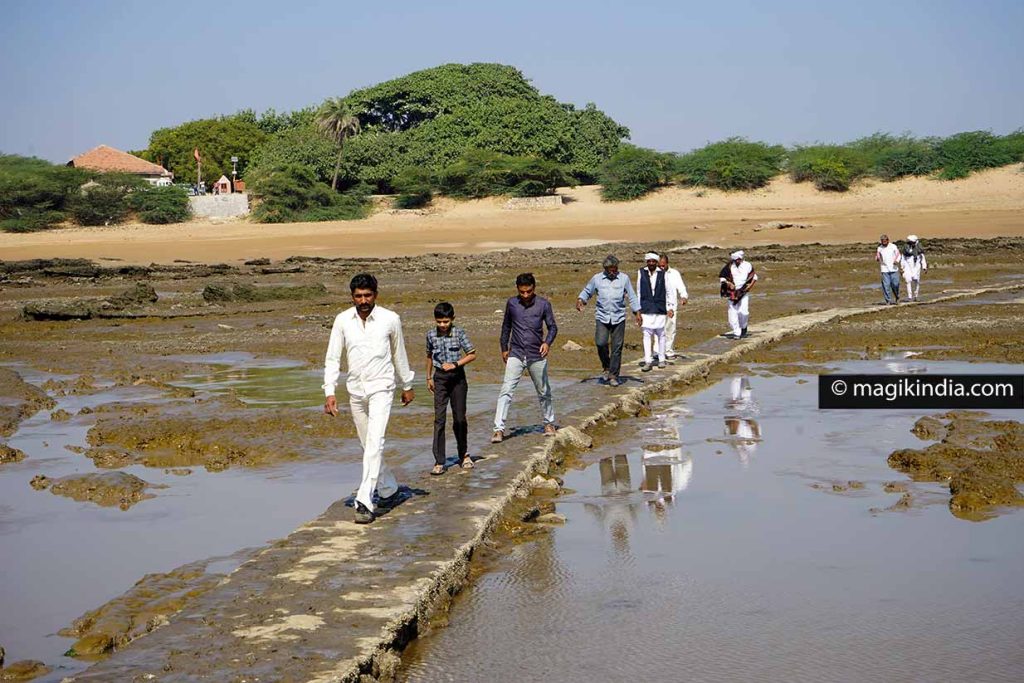
After brief introductions, we all leave together towards the temple; the cobbled path covered in algae is very slippery. We advance cautiously to the platform on which are erected two lingams which seem very old.
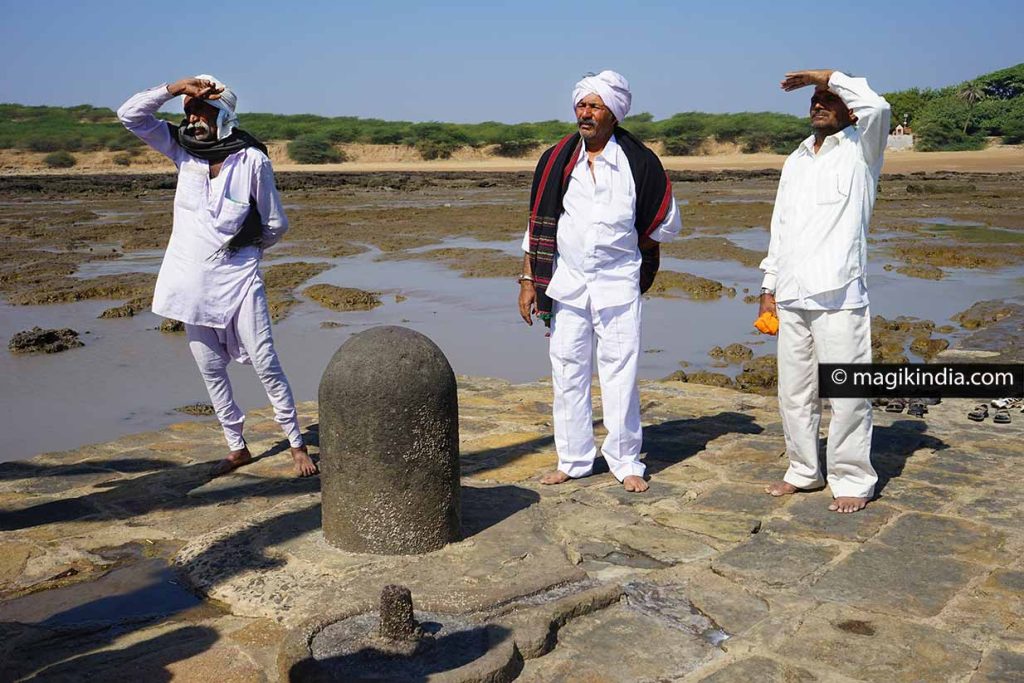
After the darshan and a few photos, here we are, back on the shore. The family cordially invites me to have lunch with them. I accept without being asked, I like to discover the gastronomy of each region of India. I have become a real foodie over the years!
The women are already busy in the kitchen adjoining the temple: vegetable curry, chapati bread and sweets. All cooked over a wood fire.
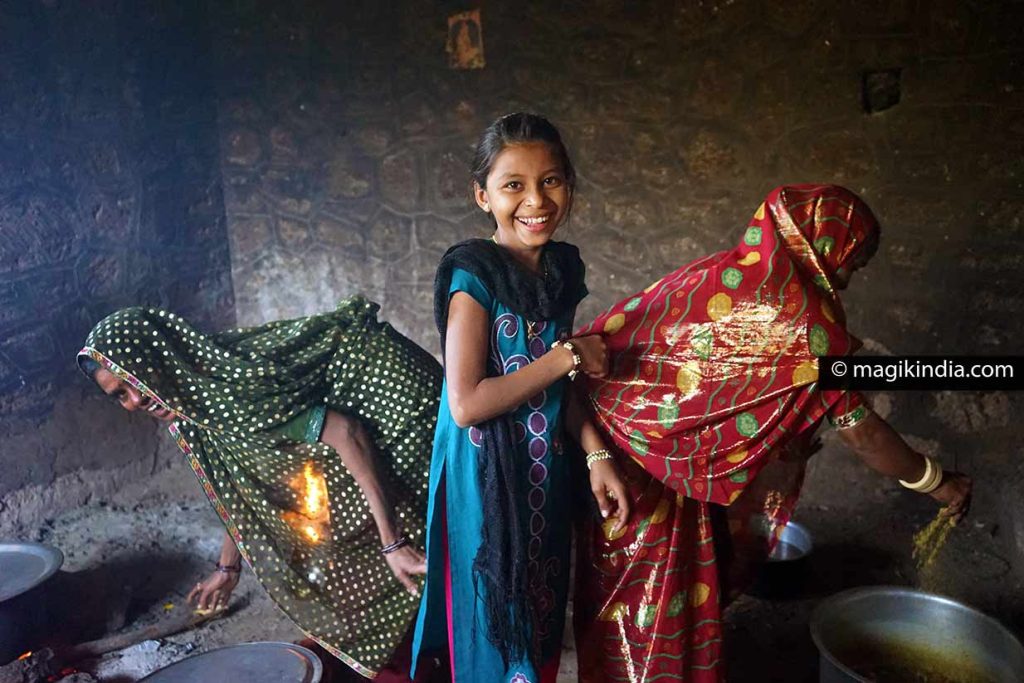
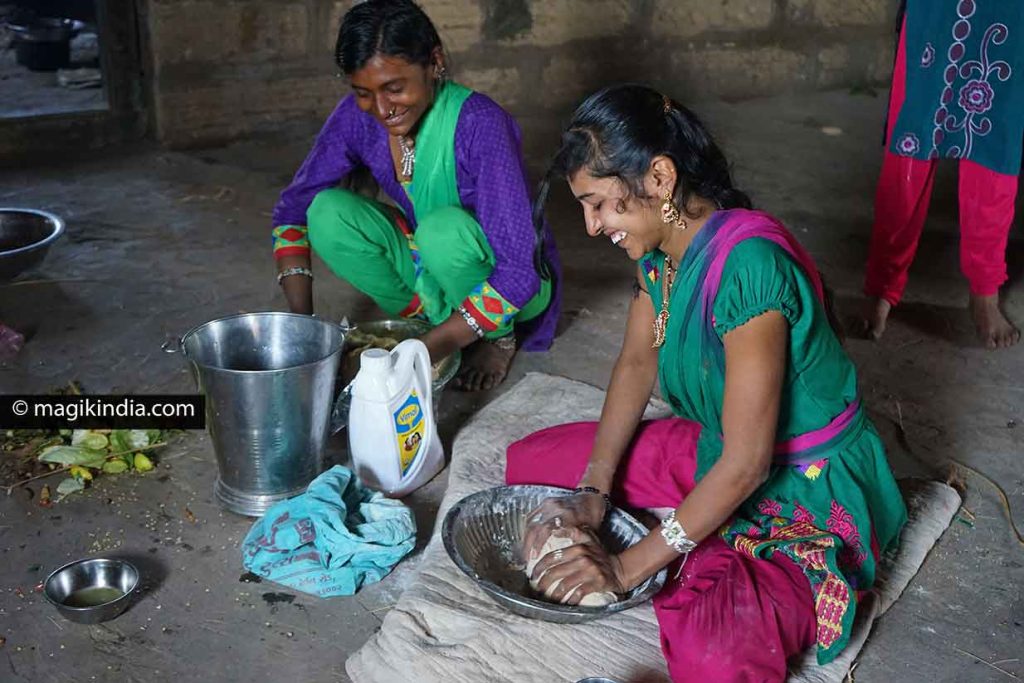
While the food is simmering, I accompany a few family members to another place; the women carry offering trays composed of laddoos, coconut and kumkum and sandalwood powders.
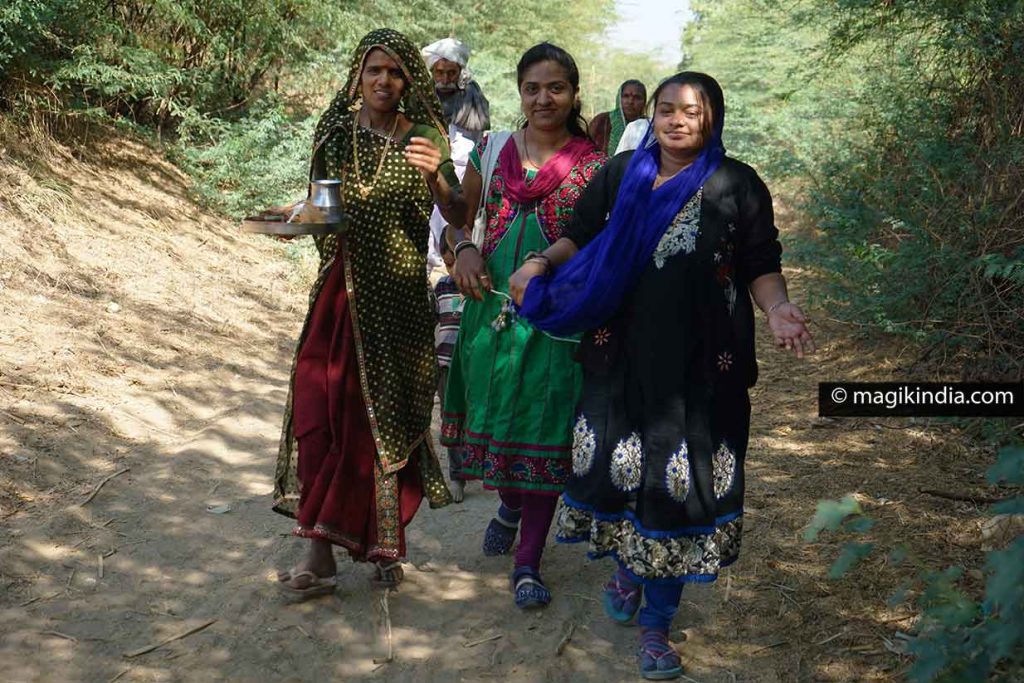
The bushy path leads to a clearing in the middle of which sits a tiny sanctuary. It is also dedicated to Lord Shiva. We sit quietly around the altar where rituals take place. A coconut is broken to begin the puja in an auspicious way and several laddoos sweets are placed in front of the oil lamp. Surely the family was celebrating a special event that day. Immersed in the present moment, I didn’t think to ask them about it.
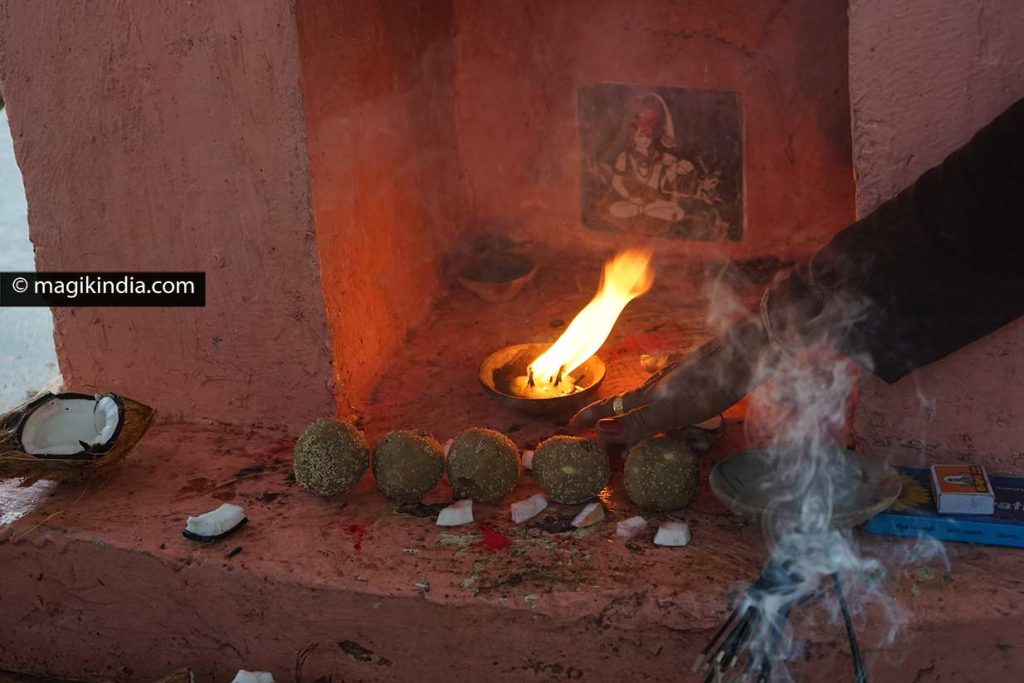
When we are back to the temple, the meal is ready and I am invited to the “family table”. The dishes served with generosity are simply delicious. The incredible hospitality of Indian people is not a legend and despite years in India it still impresses me. Could we, in the West, invite total strangers to share a meal with us?
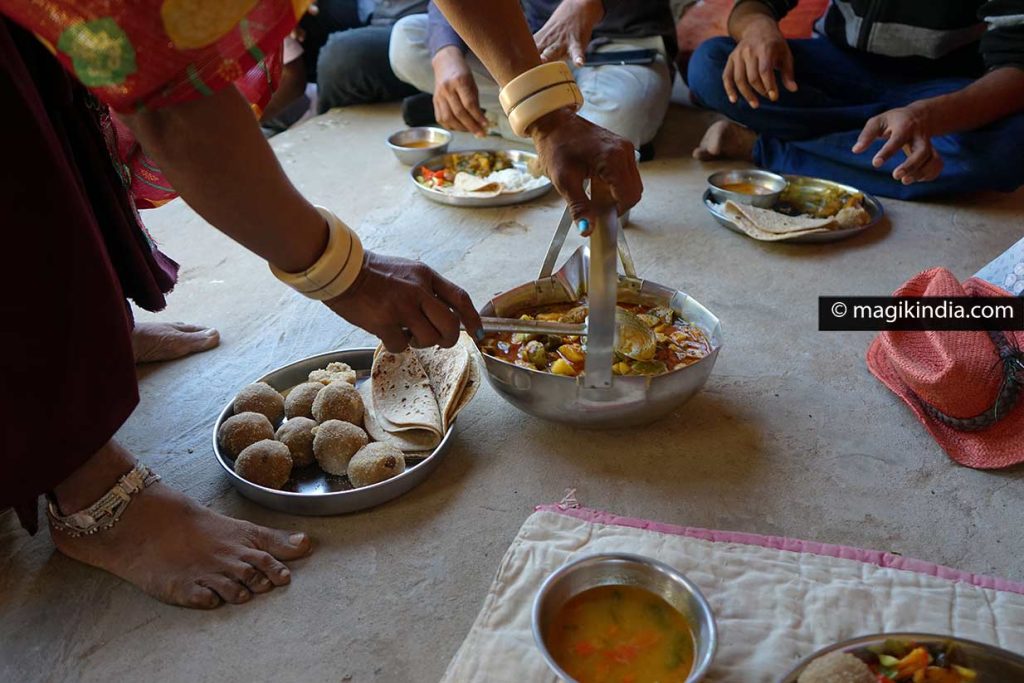
When the meal is finished, it’s time to leave for other adventures, it’s already 4 p.m. We exchange our mobile numbers and I say goodbye to my warm hosts.
Pingleshwar temple is now covered by high tide.
